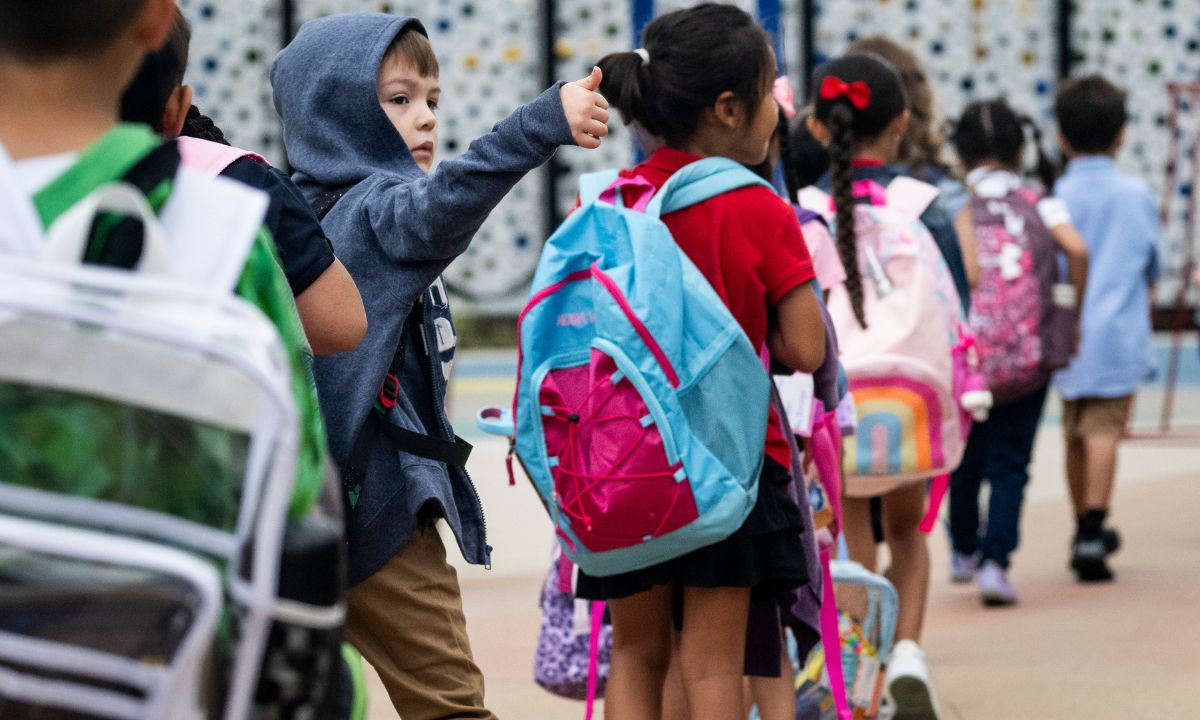Congress Needs to Protect Resources for Homeless Students in Next Year’s Budget
Erb-Downward: A proposal to roll McKinney-Vento money into a block grant would effectively strip support from vulnerable children.

Get stories like this delivered straight to your inbox. Sign up for The 74 Newsletter
As more Americans struggle to find affordable housing, homelessness is increasingly a reality for families with children across our country. This is why it’s particularly concerning to see that the president’s 2026 budget proposal not only cuts funding for public schools by 15% but would effectively remove existing support for children experiencing homelessness.
When Congress takes up the fiscal year 2026 budget, leaders should maintain dedicated funding to support these vulnerable children.
Roughly 1.4 million children in schools across the U.S. are homeless. These children currently have legal protections that remove barriers to enrollment and attendance. This has been the case since the signing of the federal McKinney-Vento Act by then-President Ronald Reagan in 1987. The law recognizes the challenges faced by children who lack a “fixed, stable, and adequate nighttime residence” and protects children’s right to enroll in and remain in school when their lack of stable housing might otherwise make this impossible.
Along with legal protections, the law authorizes federal funding that helps schools identify and support children experiencing homelessness. These funds are used most frequently to provide transportation and school supplies to students and hire outreach staff who work with community agencies and train school personnel on how to connect children and families with needed services at their school and in the community.
Since the enactment of the McKinney-Vento Act, a growing body of research has demonstrated why the protections are needed. My research shows children experiencing homelessness are more likely to be chronically absent from school and less likely to graduate high school, compared to the entire student body, as well as economically disadvantaged students. Teens experiencing homelessness also face significantly greater risks to their health and well-being, with a risk of attempted suicide more than four times greater than their high school peers.
While annual funding designated for helping schools serve students without stable housing makes up less than 1% of past years’ federal education budget at roughly $129 million annually, these funds have a substantial impact. In an evaluation of American Rescue Plan funding targeted to improve identification and services for homeless students (ARP-HCY), school districts that received additional funding saw a 25% increase in the identification of students experiencing homelessness, as well as reduced rates of chronic absenteeism, improvements in reading, science and math, and increased graduation rates among homeless students.
Additionally, in a separate study of New York State schools that I worked on at Poverty Solutions at the University of Michigan in partnership with SchoolHouse Connection, school personnel reported that school districts that had previously had little awareness of the impact of homelessness on children in their schools were better able to identify and serve students as a result of receiving dedicated funding.
The president’s 2026 budget proposal will gut the McKinney-Vento Act and leave children who are homeless without the vital support of their schools. The proposal rolls 18 programs –- including McKinney-Vento funding for homeless students –- into a single flexible state block grant, and it cuts the collective funding for those programs from $6.5 billion to $2 billion.
Proponents argue that the block grant approach does not eliminate funding for homeless students and simply provides states more flexibility in how they spend their education dollars. However, previous state block grants tell a different story. When funding for an established program is transferred to unrestricted block grants, grants often do not continue to be used for their original purpose.
The best example of this is the replacement of federal cash assistance with the block grant for states known as Temporary Assistance for Needy Families (TANF). Since the TANF block grant was put in place, the total amount of cash assistance provided to families fell by 78% in real value from 1993 to 2016. This decline did not coincide with a decrease in need; instead it was driven by fewer needy families receiving assistance. The most recent fiscal data available shows that as of FY 2023 only one-quarter of TANF spending nationally went to basic assistance, with some states spending as little as 2%.
By cutting the overall budget for the 18 federal education programs covered in the proposed state block grant by 70%, states will be in a position of scarcity trying to cover program needs that cannot all be met. We saw this during the pandemic when only 18% of school homelessness liaisons surveyed said their districts spent federal coronavirus relief education funding on services for homeless students –- despite that being an allowable use of the funds. Without the backing of a federal requirement that homeless students be identified and served by schools and a corresponding budget allocation, funding for students who are homeless will be eaten away by other programs in many states, and legal protections will disappear.
There is still time to ensure that the final education budget does not strip away the educational rights of students experiencing homelessness. Congress should not include the McKinney-Vento program in any block grant, but rather keep it in its current form, as the budget proposal does for both Title I programs that serve students in high-poverty areas and Individuals with Disabilities Education Act programs. By preserving the McKinney-Vento program, we can ensure that being homeless as a child does not determine the course of that child’s education or future.
Get stories like these delivered straight to your inbox. Sign up for The 74 Newsletter

;)
